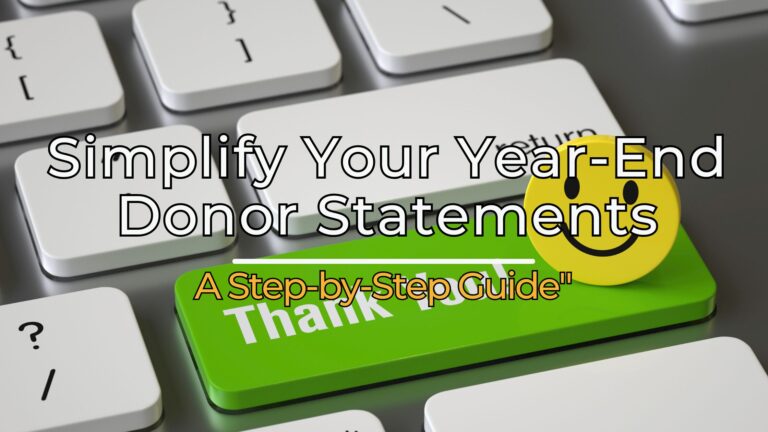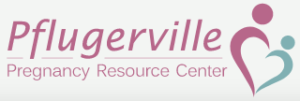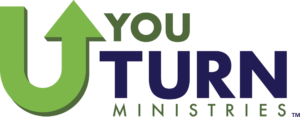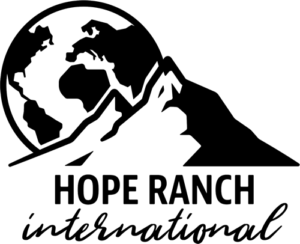Preparing Year-End Donor Statements: A Guide for Churches and Ministry Staff

Year-end donor statements are more than just a compliance task—they’re a chance to express gratitude and remind your supporters how much their generosity means. Sure, the IRS requires these statements, but they’re also a great way to build trust and celebrate your ministry’s mission. Let’s walk through the process together.
Key Highlights to Remember
- Deadline: Donor statements must be provided to donors by January 31st. Mark it on your calendar and give yourself plenty of time.
- Who Requires a Statement: Legally, you’re only required to send statements to donors who gave $250 or more during the year. That said, sending statements to all donors can be a thoughtful gesture.
- Delivery Options: Statements can go via mail or email. If you’re using donor management software like Planning Center Online or Subsplash, there might be email options that save time.
- Include a Note of Gratitude: Pair your statement with a heartfelt thank-you. Let donors know their impact and share the ministry’s vision.
- Donation Dates Matter: Donations must be received by December 31, 2024, to count for this year. Be sure to double-check those dates.
Step-by-Step Guide to Preparing Year-End Donor Statements
1. Review Donor Information
Timeline: Complete this by January 10th.
- Check addresses, emails, and everything in between to ensure statements reach the right people.
- Don’t forget to merge duplicate profiles for donors or family members who may have separate entries. Consolidating profiles simplifies things for everyone.
2. Reconcile Giving Records
Timeline: Aim to finish by January 15th.
- Double-check that every donation from 2024 is entered and accurate. Keep an eye on received dates—only donations made by December 31, 2024, count.
- NOTE: IRS regulations allow for any mail-in donations postmarked by December 31st to be counted as donations from that year, even if you technically received the donation after that date. You should keep the envelopes for proof in your files.
- Review records for any missing or miscategorized contributions.
3. Prepare Donor Statements
Use your donor management software to generate statements. Here’s what to include:
- Donor’s name and address.
- Total contributions for the year.
- Dates and amounts of individual donations.
- Funds contributed to (e.g., missions, building fund).
- Include whether any goods or services were provided in exchange for the donation: Something like “No goods or services were provided in exchange for this donation” is sufficient. For ministries offering intangible religious benefits, use a simple line like “The charity provided intangible religious benefits to the contributor.” This detail is essential to meet IRS requirements.
- Include your Federal Tax ID in the statement.
4. Send Statements
Timeline: Send by January 25th to allow for delivery before the deadline.
- Email Delivery: Use your donor management software for donors with email addresses.
- Mail Delivery: For those who prefer physical mail, print and send. Include a thoughtful thank-you letter.
5. Include a Thank-You Letter
Show your appreciation by sharing how contributions supported your ministry’s work last year. Consider adding a short story or example of impact. This is a chance to remind donors that they’re an integral part of your mission.
Recording In-Kind Donations
In-kind donations are non-cash gifts like donated goods or services. They’re valuable and need proper acknowledgment. Here’s how to handle them:
- What Counts: Examples include furniture, food, event space, or professional services like graphic design.
- Who Values It: The donor is responsible for determining the fair market value for tax purposes. Ministries should not assign a dollar amount but can describe the item or service in their acknowledgment.
- Acknowledgment Letters: Include the donor’s name, a description of the gift, and the date it was received. Skip the valuation—that’s the donor’s responsibility.
- Tracking In-Kind Gifts: Record these contributions in a separate category in your system and note their purpose or any restrictions. This keeps your records organized.
Additional Tips
- Start Early: Avoid last-minute scrambling by beginning preparations as early as possible.
- Keep It Personal: A personalized thank-you or tailored message can make a big difference to your donors.
- Go Digital: Encourage donors to opt into email statements for a faster, more eco-friendly process.
- Document Everything: Maintain a record of when and how statements were sent. This can be a helpful reference for future years.
By preparing year-end donor statements thoughtfully and efficiently, you’ll not only meet legal requirements but also strengthen relationships with your supporters. After all, they’re the heart of your ministry’s mission—and that’s worth celebrating!


































